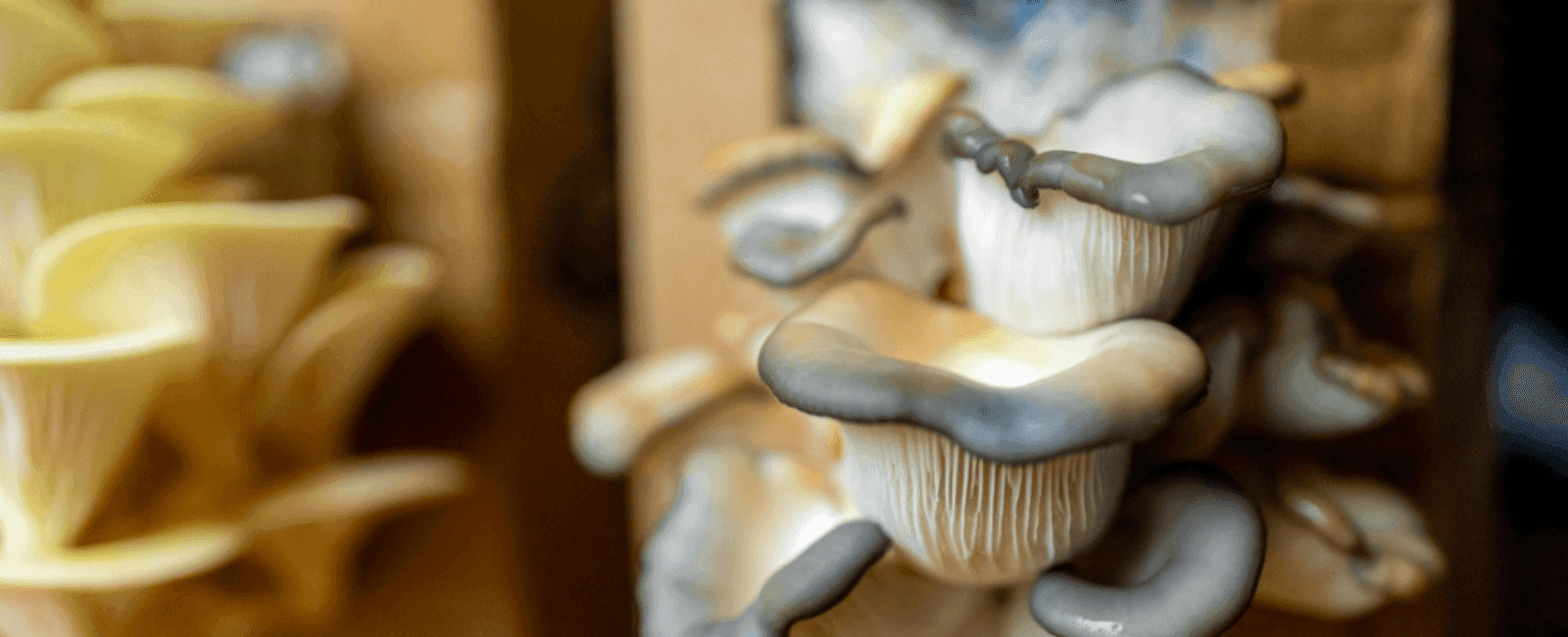

In the growing field of mushroom supplements, the distinction between products made with 100% fruiting bodies and those that are mycelium-based, or full spectrum, is a pivotal turning point. While the FDA decides on the current petition that would require companies to clearly label mushroom products, a groundbreaking study was published that will delight professional and home growers alike.
”Optimizing tea waste as a sustainable substrate for oyster mushroom (Pleurotus ostreatus) cultivation” is packed with research that highlights the environmental and nutritional benefits of tea waste as a substrate, especially compared to grain fillers. (1) What’s more, the research gives us insight into the substrate’s role in mushroom composition. As more people turn to the natural power of mushrooms, understanding what’s in those products and how they’re produced becomes even more important.
Biological efficiency and substrate

Grain starch, such as wheat bran, rice bran, or other cereal grains, is often used as a substrate for most types of mushroom cultivation. These grains are rich in starch, which is a type of carbohydrate. Mushrooms can’t directly consume starch; they need it broken down into simpler sugars. Mycelium grows through grain starch and does just that so the mushrooms can use it as food for growth. This type of substrate has a few drawbacks, the most important being its health risks as it can accumulate heavy metals and its lower biological efficiency.
Biological efficiency is a way to measure how well mushrooms grow on a particular substrate. In scientific terms, it’s the measure of the mushroom yield relative to the substrate’s weight. The study found that oyster mushrooms grown on tea waste produced a higher yield and growth rate compared to those grown on grain fillers, per the study. (1)
The benefits of using tea waste as substrate

Nutritional benefits
Because tea waste is so nutrient-rich, the minerals and organic matter jumpstarted the growth of oyster mushrooms. The study found that oyster mushrooms cultivated on tea waste substrates contained higher levels of essential amino acids and micronutrients than those grown on grain fillers.
Similarly, a study was published in 2015 that affirms this research. In ”Tea waste: an effective and economic substrate for oyster mushroom cultivation,” tea waste was used in varying quantities with substrate to cultivate oyster mushrooms. The researchers found that “the substrate containing 40–60% of tea waste resulted in the highest yield.” (2)
Environmental sustainability
Grain fillers require extensive agricultural resources and may have been exposed to synthetic fertilizers and pesticides common in cultivation. Tea waste conserves resources and is part of the circular economy where waste becomes a valuable food resource, whether it’s a million-dollar mushroom farm or a home grower in their kitchen.
The 2015 study also highlighted how companies can deal with large amounts of tea waste, proving that it’s a viable and sustainable method of mushroom cultivation, one that will become more popular as demand grows. (2)
Using tea waste for home cultivation

If you grow oyster mushrooms at home, this study is particularly exciting. Especially if you drink a lot of tea. We suggest that you cut the ratio of tea waste to traditional substrate to 50:50, or maybe a little more to not run the risk of contamination.
This tried-and-true method from Redditor u/sealingcat is one of my favorite comments of all-time:
Sure, it’s a lot like making compost. You’re going to need carbon sources, nitrogen sources, and water control. I think a lot of mushroom heaps are just like compost heaps that you don’t turn…and try to keep clean.
With that in mind, I mix about a gallon of sawdust, a sprinkle of gypsum to keep the thing from getting too soggy, and maybe 2 cups of spent tea leaves with enough water to make it evenly damp without being drippy. Then I toss the spawn in and seal in a mushroom bag and let the mycelium recover until I’m ready to fruit the thing.
My point is that you can use just about any nitrogen source as long as it’s pretty free of contaminants. Hay is a popular one, and I’ve seen people use coffee grounds with some success. I doubt that many mushrooms would grow on tea leaves alone though, they tend to not hold that much water, and hyphae need to breathe!
It feels rare that a scientific study is a practical thing you can do at home, but in this case, try using tea waste for your next batch of oyster mushrooms. Everyday sustainability is possible and with each study, we come closer to realizing the full potential of mushrooms and fungi, and the gifts they offer the environment. In turn, we benefit, too.
References
- Ahmed R, Niloy MAHM, Islam MS, Reza MS, Yesmin S, Rasul SB and Khandakar J (2024) Optimizing tea waste as a sustainable substrate for oyster mushroom (Pleurotus ostreatus) cultivation: a comprehensive study on biological efficiency and nutritional aspect. Front. Sustain. Food Syst. 7:1308053. doi: 10.3389/fsufs.2023.1308053
- Yang, Doudou et al. “Tea waste: an effective and economic substrate for oyster mushroom cultivation.” Journal of the science of food and agriculture vol. 96,2 (2016): 680-4. doi:10.1002/jsfa.7140


